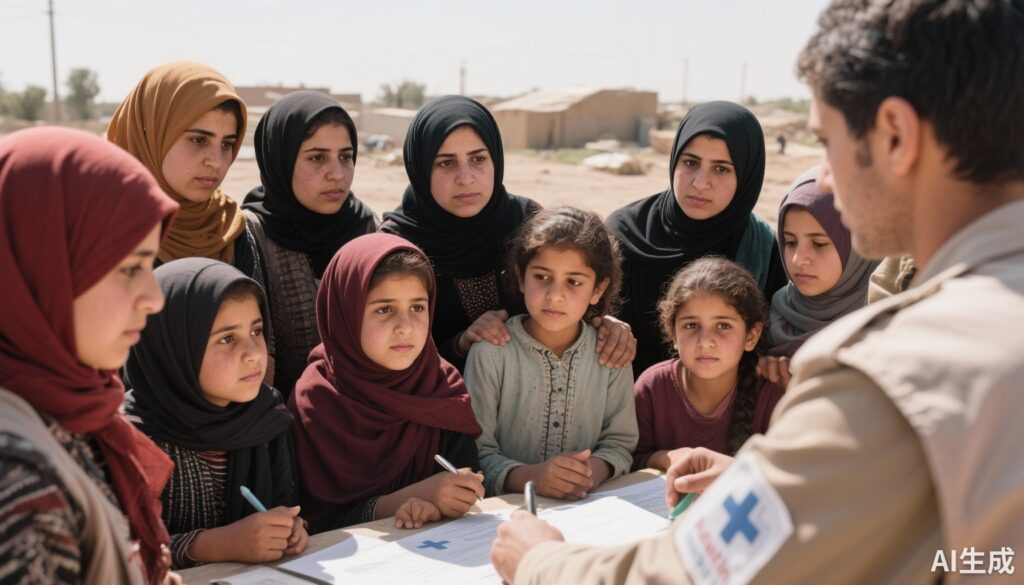Highlight
– Armed conflict increasingly exposes women and girls to gender-based violence (GBV), with more than 612 million living near conflict zones as of 2023.
– Verified conflict-related sexual violence incidents predominantly affect women and girls, yet reported cases likely underestimate the true scope.
– Despite increased recognition, funding for GBV programs remains critically low, undermining the effectiveness of humanitarian responses.
– Community-based prevention initiatives demonstrate feasibility and efficacy even in protracted and acute crisis settings.
– Women’s leadership and engagement in peacebuilding and programming significantly improve inclusion of gender provisions and response outcomes.
Study Background and Disease Burden
Armed conflicts worldwide disproportionately impact women and girls, exposing them to heightened risks of various forms of GBV including sexual violence, exploitation, and intimate partner violence. In 2023, approximately 612 million women and girls lived within 50 kilometers of active conflict zones, reflecting a substantial 41% increase since 2015. These conditions exacerbate vulnerabilities due to disrupted services and protective systems. UN verification in 2023 documented 3,688 incidents of conflict-related sexual violence, with 95% of survivors being women or girls. However, these figures significantly underrepresent actual prevalence.
Meta-analytic data combining studies of women in conflict-affected settings demonstrate that over 11% experienced non-partner sexual violence during conflict, with lifetime prevalence estimates reaching 21%, triple the 6% global WHO estimates. Such violence contributes to acute and long-term physical, psychological, social, and economic morbidity, posing a substantial public health and human rights crisis exacerbated by systemic underreporting and stigma.
Study Design
The evidence synthesized draws from a forthcoming meta-analysis pooling data across 11 studies on conflict-affected populations (totaling 7,948 participants) and analyses encompassing over 16,700 women from 8 studies, assessing prevalence and patterns of sexual and gender-based violence. Further qualitative and quantitative data derive from humanitarian program evaluations in protracted crises such as Somalia and Haiti, and emerging acute crises including Sudan, Gaza, and Lebanon.
Humanitarian programmatic assessments evaluate the impact of interventions such as the Communities Care programme and adaptations of the SASA! approach on social norms and intimate partner violence prevalence. These studies utilize controlled community comparisons with pre- and post-intervention measures of attitudes and reported violence.
Key Findings
The compiled data underscore a rising trend in GBV perpetration in conflict zones, with non-partner sexual violence among women in these settings significantly higher than global averages. Reports from Sudan exemplify the intensifying brutality faced by women.
Funding limitations remain a critical challenge; in 2023, under 1% of UN consolidated appeal funding was earmarked for GBV-specific programming. Despite increased awareness and guideline issuance, such as the 2015 Inter-Agency Standing Committee guidelines, the commitment among humanitarian actors to prioritize GBV risk mitigation remains inconsistent.
Root causes of GBV—gender inequality and power imbalances—are frequently sidelined in humanitarian mandates focused on life-saving aid. This systemic oversight compromises comprehensive responses.
Conversely, women’s leadership in community prevention and peacebuilding efforts correlates with stronger gender inclusion in peace agreements and enhanced legal and policy advocacy during crises. Evidence from community-based prevention programs in Somalia illustrates improved social norms and reduced acceptance of sexual violence, while interventions in Haiti demonstrate a halving of past-year physical or sexual intimate partner violence, achieved despite the presence of active armed groups.
Innovative participatory approaches like the Empowered Aid programme effectively engage women and girls in risk identification and mitigation strategies for sexual exploitation and abuse, improving accountability within humanitarian aid structures even during acute crises.
Looking forward, preparedness and response strategies emphasize survivor-centered, multisectoral service expansion, including health care, mental health support, legal aid, and economic empowerment. Innovative service delivery models, such as community emergency rooms established in conflict zones like Sudan, exemplify successful barrier reduction to care.
Expert Commentary
Experts acknowledge that the humanitarian architecture’s limited prioritization of GBV reflects a critical gap that undermines holistic crisis response effectiveness. Integrating gender-transformative approaches alongside immediate aid is feasible and warranted, particularly given the protracted nature of many crises.
The demonstrated success of community-driven, culturally sensitive prevention programs challenges prevailing assumptions that such interventions are impractical in unstable or acute emergency contexts. Leadership roles assumed by women within their communities enhance program responsiveness and sustainability.
Nevertheless, challenges persist including data underreporting, limited funding streams, variable institutional commitment, and the complex interplay of socio-political determinants that perpetuate GBV. Future efforts must address these multifactorial barriers to achieve substantive progress.
Conclusion
The prevalence and severity of violence against women and girls in conflict settings constitute a major, escalating public health and humanitarian emergency. While recognition of this crisis has improved, practical funding and programmatic prioritization remain insufficient relative to need.
Emerging evidence supports that prevention and response interventions—particularly those led by women and tailored to community contexts—are effective even amid ongoing conflict and protracted emergency settings. Scaling such efforts and integrating survivor-centered, multisectoral services are critical priorities.
The international community must elevate support for women-led organizations, embed gender equity principles across humanitarian frameworks, and innovate service delivery to surmount barriers in access. Addressing root causes such as entrenched gender inequalities alongside immediate protection and recovery needs will be essential to reduce GBV and advance equity in settings devastated by conflict.
Sustained investment, political will, and collaborative leadership recognition are needed to transform progress into durable protection and empowerment for women and girls worldwide amidst the growing global burden of conflict-related violence.
References
1. Murphy M, Potts A, Nassif G, et al. Violence against women and girls in conflict: progress and priorities. Lancet. 2025;404(10471):2495-2498. doi:10.1016/S0140-6736(24)02625-4 IF: 88.5 Q1 2. World Health Organization. Global and regional estimates of violence against women: prevalence and health effects. WHO; 2021.



